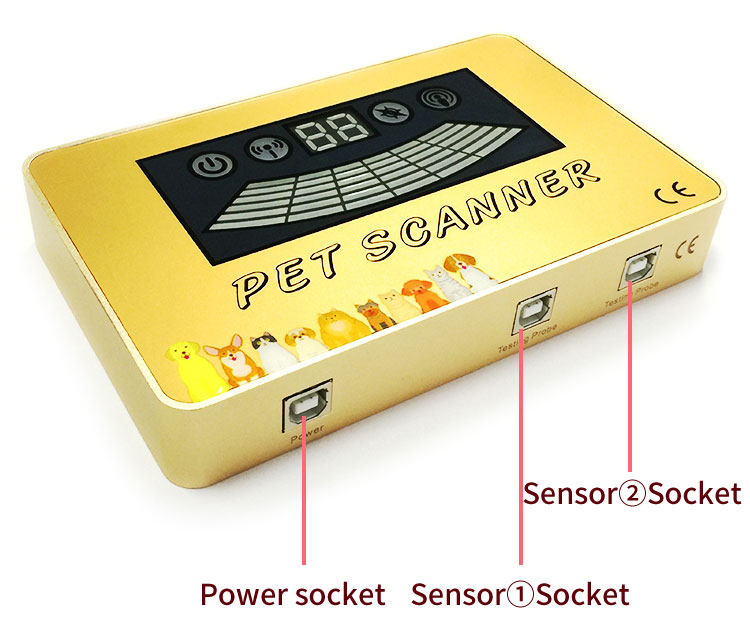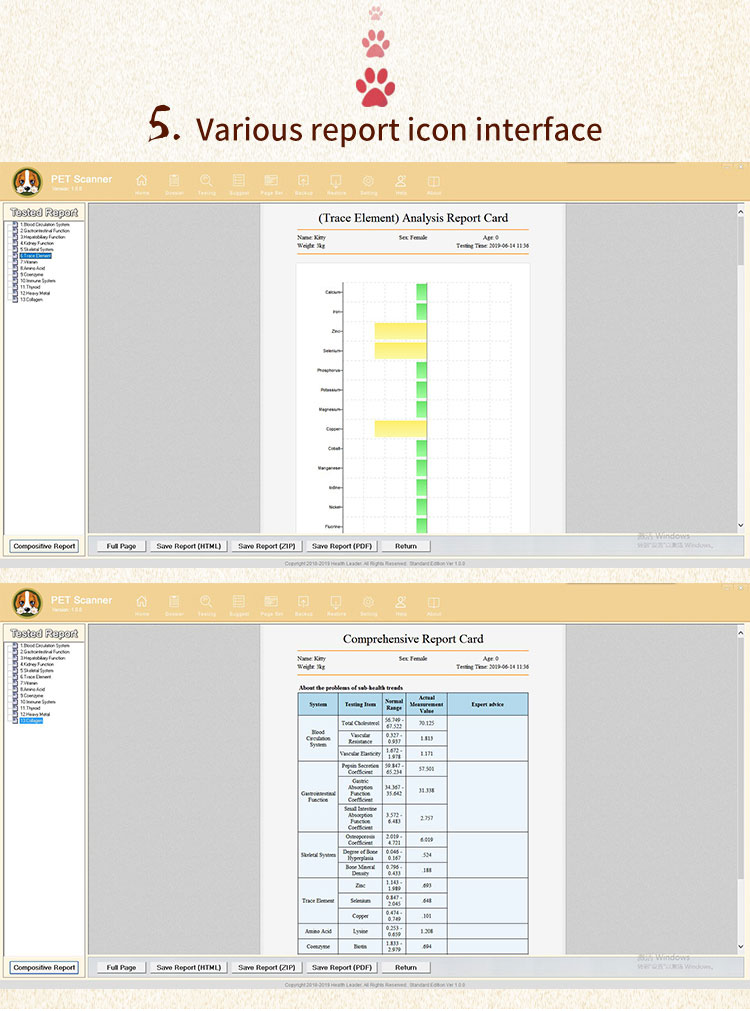Analysis of CCD, Super CCD and CMOS "CCD"
The development of digital cameras is really a long time, and various new photographic technologies have emerged recently. Many digital camera manufacturers are arguing about how much their product pixels are high and how good the picture quality is. Customers are also confused when they buy digital cameras, and they have no bottom. In order to let everyone have a general understanding of the three digital camera sensors commonly used in the market - CCD, SUPER CCD, CMOS, we have made a summary of these three photosensitive components, welcome readers to discuss with us.
First, CCD
The photosensitive element used in most digital cameras is CCD (Chagre Couled Device), whose Chinese name is a charge coupler and is a special semiconductor material. He is composed of a large number of independent photosensitive elements, which are usually arranged in a matrix. Light is transmitted through the lens onto the CCD and converted into electrical charge. The amount of charge on each component depends on the intensity of the light it is subjected to. When you press the shutter, the CCD transmits the information of each component to the analog-to-digital converter. The analog electrical signal is processed by the analog-to-digital converter and becomes a digital signal. The digital signal is compressed in a certain format and stored in the buffer. A digital photo was born. The image data is then output in the form of digital signals and video signals according to different needs.
At present, there are mainly two types of CCD photosensitive elements, which are a linear CCD and a matrix CCD. Linear CCDs are used in high-resolution still cameras that take only one line of the image at a time, the same way that a flatbed scanner scans a photo. This CCD has high precision and slow speed and cannot be used to shoot moving objects or use flash. Therefore, it is not applicable in many occasions, not in the scope of our discussion today.
The other is a matrix CCD in which each photosensitive element represents a pixel in the image, and when the shutter is opened, the entire image is simultaneously exposed at a time. There are two methods for using matrix CCDs to process colors. One is to embed color filters in the CCD matrix, and similar pixels use filters of different colors. Typical arrangements are GRGB and CYGM. The principle of imaging in both arrangements is the same. In the process of recording a photo, the microprocessor inside the camera obtains a signal from each pixel, and combines the adjacent four points into one pixel. This method allows for instant exposure and the microprocessor can operate very quickly. This is the imaging principle of most digital camera CCDs. Because it is not the same point synthesis, which contains mathematical calculations, the biggest drawback of this CCD is that the resulting image is always unable to achieve sharpness like a knife.
Another method of processing is to use a prism, which splits the light incident from the lens into three beams, each of which is filtered by a different built-in grating to extract a certain three primary colors, and then is respectively sensitized using three CCDs. These images are then combined to produce a high resolution, color accurate image. For example, a 3 megapixel camera is illuminated by three 3 megapixel CCDs. That is to say, the same point synthesis can be achieved, so the picture taken is quite sharp. The main difficulty with this approach is that it contains too much data. The data stored in the camera's buffer must be erased and saved before you take a photo. Therefore, such cameras are very demanding on other components, and the price is naturally very expensive.
Second, SUPER CCD
The SUPER CCD is exclusively introduced by Fujifilm. Instead of using a conventional square diode, it uses an octagonal diode. The pixels are arranged in a honeycomb form and the area of ​​the unit pixel is larger than that of a conventional CCD. The result of rotating the pixels by 45 degrees is that the unnecessary space for image capturing can be reduced, the efficiency of light concentration is relatively high, and the sensitivity, signal-to-noise ratio, and dynamic range are improved after the efficiency is increased. Fujifilm claims that the SUPER CCD can achieve a high sensitivity equivalent to ISO 800, the signal-to-noise ratio is increased by about 30%, the color reproduction is greatly improved, and the power consumption is much reduced. Fujifilm claims that the SUPER CCD is comparable to the resolution of a conventional 40% pixel CCD. The SUPRE CCD breaks the golden rule that the CCD effective pixels are smaller than the total pixels. It can output a 4.3 megapixel image on a 2.4 megapixel SUPER CCD. . Therefore, Fujifilm and their SUPER CCD have attracted widespread attention in the industry.
In order to increase the resolution on the conventional CCD, most digital camera manufacturers adopt the method of adopting the civilian-grade products without increasing the CCD size, reducing the unit pixel area, and increasing the pixel density. We know that the smaller the area of ​​the unit pixel, the lower the photographic performance, the lower the signal-to-noise ratio, and the narrower the dynamic range. Therefore, this method cannot increase the resolution without limitation. If the CCD area is not increased and the resolution is simply increased, it will only cause deterioration of image quality. However, if it is desired to maintain the existing image quality while increasing the CCD pixel, it is necessary to increase the total area of ​​the CCD while maintaining at least a reduction in the unit pixel area. However, at present, the processing of larger CCD processing is more difficult, and the yield is lower, so the cost has not been reduced.
Each pixel in a conventional CCD consists of a diode, a control signal path, and a power transfer path. The SUPER CCD uses a honeycomb octagonal diode. The original control signal path is eliminated. Only one direction of the power transmission path is required, and the photodiode has more space. SUPER CCD is tighter than ordinary CCD in the arrangement structure, and the utilization rate of pixels is higher. That is to say, under the same size, the photosensitive diode of SUPER CCD absorbs light more, which makes sensitivity, signal-to-noise ratio and The dynamic range has been improved.
So why is the output pixel of the SUPER CCD higher than the effective pixel? We know that CCD is not very sensitive to green, so it is synthesized by G-B-R-G. Each synthesized pixel actually has a part of the real pixel points shared, so the image quality has a certain gap with the ideal state, which is why some high-end professional-grade digital cameras use 3CCD to respectively experience the RGB three-color light. The SUPER CCD achieves R, G, and B pixels by changing the arrangement relationship between pixels, and is also grouped in three when synthesizing pixels. So the traditional CCD is four synthetic pixels, in fact, as long as three on the line, wasted one, and SUPER CCD found this, only three can be combined to form a pixel. That is to say, the CCD synthesizes one pixel every 4 points, and each point is calculated 4 times; the SUPER CCD synthesizes one pixel every 3 points, and each point is also calculated 4 times, so the utilization rate of the SUPER CCD pixel is higher than that of the conventional CCD. More pixels are generated.
Science is to speak with facts, and there is no factual basis or an empty talk. After repeated trials of several civilian-grade digital cameras of the Fuji SUPER CCD, it was found that, at least for the civilian-grade SUPER CCD, the image quality at its maximum resolution was not as good as people imagined. In addition to the more beautiful color reproduction, we can find obvious noise signals in the blue sky and dark details, and the image clarity is average. This shows that the 2.4-megapixel civilian-grade SUPER CCD cannot reach its nominal 4.3 million output pixels. So how many pixels of CCD is the 2.4 megapixel SUPER CCD? According to the statement in the previous paragraph, I think that the SUPER CCD is 33% more efficient than the CCD, so its output pixel should be 33% higher than the CCD. The Fujifilm FINEPIX 4900 has a total pixel count of 2.4 million pixels. According to my estimation, its output pixel is roughly equivalent to 3.2 million (240 × 133% = 3.2 million). The 4900's nominal output size is 4.3 million pixels, so how is this 1.1 million pixels extra? I think it might be using interpolation technology. This may be why we are not very clear about the photos taken by the SUPER CCD at 100% size. If you want to treat the camera such as FINEPIX4900 and FINEPIX4700 with SUPER CCD objectively and fairly, you should treat it as a 3.2 megapixel digital camera.
Third, CMOS
Our understanding of CMOS began with the release of the EOS D30's quasi-professional digital body last year. At that time, many people in the industry were shocked. It was incredible to use this kind of cheap material to make photosensitive elements. It is believed that the quality of CMOS imaging cannot meet the needs of professional users with higher requirements. Is the photosensitive element made of CMOS really useless in image quality? Let us first understand what CMOS is. CMOS is a complementary metal oxide semiconductor that plays an absolutely important role in the semiconductor technology of microprocessors, flash memories and ASICs. Both CMOS and CCD can be used to sense light-changing semiconductors. CMOS is mainly made up of semiconductors made of two elements, silicon and germanium, which implement basic functions through negatively charged and positively charged transistors on CMOS. The current generated by these two complementary effects can be recorded and interpreted by the processing chip into an image.
The main advantage of CMOS for CCD is that it is very power efficient. Unlike CCDs made up of diodes, CMOS circuits have almost no static power consumption, and only consume power when the circuit is turned on. This makes the power consumption of CMOS only about 1/3 of that of ordinary CCD, which helps to improve the bad impression that digital cameras are "electric tigers". We know that CMOS has been used in the metering focus system on Canon EOS series AF cameras. Canon has strong technical strength and rich experience in this area. It has become easier to manufacture larger and larger CMOS sensor chips at a lower cost, and CMOS can integrate image processing circuits on the chip. The main problem with CMOS is that when dealing with fast-changing images, the current changes too often and overheats. If the dark current is suppressed well, the problem is not big. If the suppression is not good, the noise is very likely to occur. The D30 has a dedicated loop to control dark current. The noise reduction system works automatically when exposed for more than 1 second, which can greatly reduce noise generation.
In addition, CMOS and CCD image data scanning methods are very different. For example, if the resolution is 3 million pixels, then the CCD sensor can continuously scan 3 million charges. The scanning method is very simple, just like transferring the bucket from one person to another, and only after the last data scan is completed. The signal can then be amplified. Each pixel of a CMOS sensor has an amplifier that converts the charge into an electrical signal. Therefore, the CMOS sensor can perform signal amplification on a per-pixel basis. This method can save any invalid transmission operation, so fast data scanning can be performed with a small amount of energy consumption, and noise is also reduced. This is Canon's in-pixel charge transfer technology.
We viewed a large number of photos taken by CANON EOS D30 through INTERNET and found that the CMOS imaging effect is no worse than the traditional CCD. If this kind of light-sensitive chip with low energy consumption and relatively easy manufacturing can make further efforts in terms of image sharpness and dynamic range, it is believed that CMOS is the development direction of future digital cameras.
What is the pet scanner?
[Pet Scanner] involves high-tech innovation projects of medicine, bio-informatics, electrical engineering and other sciences. Using the quantum medicine as the theoretical basis, it applies the advanced electronic equipment to collect the weak magnetic field of animal cells for scientific analysis, thereby analyzing and determining the tested animal's health status and main problems and
putting forward standard prevention recommendations. [Pet scanner] is individualized guide of Health Care consultation for full animal body and forward health science, and has the advantages of completeness, non-invasiveness, practicality, simplicity, fastness, economy, easy popularization, etc. With the depth and development of scientific research, it will make a greater contribution for the cause of animal health, having a broad development and application prospect.
Principle of Quantum Analyzer:
The animal body is the aggregates of a large number of cells which are in continuous growth, development, differentiation, regeneration and apoptosis, and the cells constantly self-renew through its own division. In the process of cell division and growth, those charged bodies of atomic nucleuses constituting atoms as the basic unit of cell and the electrons outside the nucleus are in constant high-speed movement and changing, thereby constantly emitting electromagnetic waves.
The electromagnetic wave signals emitted by the animal body represent the specific state of the animal body, and the emitted electromagnetic wave signals are different under the different conditions of the human body, such as health, sub-health, disease, etc. If we can determine these specific electromagnetic wave signals, we can determine the status of the body's life.
Quantum medicine considers that the most fundamental reason of falling sick is that the spin of electrons outside the atomic nucleus and the orbit change, thereby causing the change of atoms constituting a material, the change of small biomolecules, the change of big biomolecules, the change of all the cells and finally the change of organs. Because the electron is a charged body,
when the spin of electrons outside the atomic nucleus and the orbit change, the electromagnetic wave emitted by the atoms will change. The energy o f the electromagnetic wave changes caused by the changes of the animal body's diseases and physical changes in the nutritional status is extremely weak and usually is only nano gauss to microgauss. The frequency and energy of the
weak magnetic field of hair determined directly or by holding a sensor compare with the resonance spectra of standard quantum of diseases and nutrition indicators set in the instrument after the frequency and energy are amplified by the instrument and processed by the computer, and then the corresponding quantum value being from negative to positive is output. The size of the
quantum value indicates the nature and extent of the disease and the nutrition levels. Finally, the test results are resolved by clinicians. It's similar to the principle of listening to broadcasting from the radio. There are many radio waves in the air. If you want to listen to some designated broadcasting, you can transfer the radio to the corresponding frequency, at this moment, resonance occurs, so that you can listen to this broadcasting. Quantum resonance uses this principle for testing.




Pet Quantum Analyzer
Animal Quantum Analyzer, Dog Quantum, Cat Quantum
Shenzhen Guangyang Zhongkang Technology Co., Ltd , https://www.lighttherapymachine.com



